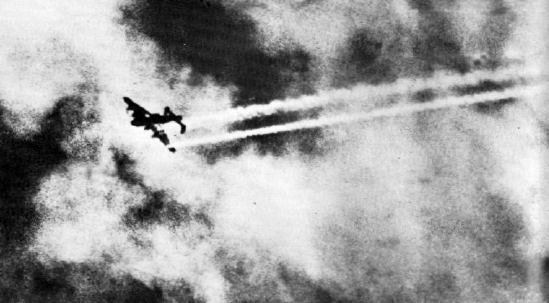 Aircrew Losses
Aircrew Losses  |
Nose Art
|
BCATP
|
Lancaster
|
Media
|
Nose Art
|
BCATP
|
Lancaster
|
Media
 Aircrew Losses
Aircrew Losses  |
Nose Art
|
BCATP
|
Lancaster
|
Media
|
Nose Art
|
BCATP
|
Lancaster
|
Media
Bomber Command

|
The successes of Bomber Command were purchased at terrible cost. Of every 100 airmen who joined Bomber Command, 45 were killed, 6 were seriously wounded, 8 became Prisoners of War, and only 41 escaped unscathed (at least physically). Of the 125,000 who served, 58,000 were killed including over 10,400 Canadians. Of those who were flying at the beginning of the war, only ten percent survived. It is a loss rate comparable only to the worst slaughter of the First World War trenches. Only the Nazi U-Boat force suffered a higher casualty rate. |
|
|
Author and historian Martin Middlebrook is the source of the following analysis. "Based on the overall 1939-1945 casualty figures for both aircraft and aircrews, the table at right is an estimate of what happened to any one hundred aircrew who first joined up into heavy-bomber crews at an Operational Training Unit and for whom the war lasted long enough for them to serve the full cycle of service with Bomber Command." |
|
On a single night, Bomber Command suffered more losses than did Fighter Command during the entire Battle of Britain.
The loss rate varied greatly as the war progressed and was considerably lower as the end of the war approached in late 1944 and early 1945. For most of the war, the majority of those who entered Bomber Command did not survive.
Canadian pilot and author Murray Peden recalls: "The crews faced formidable odds, odds seldom appreciated outside the Command. At times in the great offensives of 1943 and 1944 the short-term statistics foretold that less than 25 out of each 100 crews would survive their first tour of 30 operations. On a single night Bomber Command lost more aircrew than Fighter Command lost during the Battle of Britain. Yet the crews buckled on their chutes and set out with unshakeable resolution night after night. They fell prey to the hazards of icing, lightning, storm and structural failure, and they perished amidst the bursting shells of the flak batteries. But by far the greater number died in desperately unequal combat under the overwhelming firepower of the tenacious German night fighter defenders."
Yet despite the chilling odds, the flow of volunteers never faltered. The price was known to be enormous, but it was a price which continued to be paid with unquestioning courage. If today it represents a debt which can never be repaid, it is at least a debt which must never be forgotten.

|
Total sorties: 392,137 Total aircraft lost: 12,330 |
Tons Dropped: 955,044 Total mines laid: 47,307 |
| Sorties | Losses* | Percentage | |
|---|---|---|---|
| Lancaster | 156,192 | 3,677 | 2.4 % |
| Halifax | 82,773 | 2,083 | 2.5 % |
| Wellington | 47,409 | 1,727 | 3.6 % |
| Mosquito | 39,795 | 310 | 0.8 % |
| Stirling | 18,440 | 684 | 3.7 % |
| Hampden | 15,771 | 633 | 4.0 % |
| Bleinheim | 12,214 | 541 | 4.4 % |
| Whitley | 9,169 | 458 | 5.0 % |
| Manchester | 1,185 | 76 | 6.4 % |
| Others | 2,369 | 68 | 2.9 % |
| - | - | - | |
| Totals | 389,809 | 10,321 |